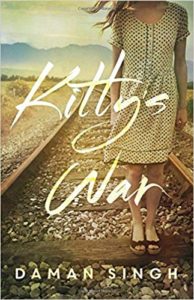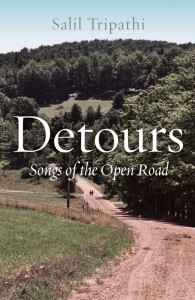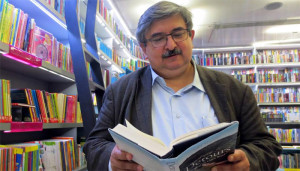‘Kitty’s War’ review: War in the gunj
My review of Daman Singh’s novel Kitty’s War has been published in The Hindu Literary Supplement. It is online on 4 August 2018 and is in print on 5 August 2018. Here is the original link and the review is c&p below.
 Katherine Riddle alias Kitty lives in a sleepy railway junction town in eastern India called Pipli. Her widower father, Terence Riddle, is a British railway man. Kitty, who works as a school teacher, returns home ostensibly for the summer break but more to decide her future as she nurses a broken heart for her high-school sweetheart, Jonathan, an Anglo-Indian.
Katherine Riddle alias Kitty lives in a sleepy railway junction town in eastern India called Pipli. Her widower father, Terence Riddle, is a British railway man. Kitty, who works as a school teacher, returns home ostensibly for the summer break but more to decide her future as she nurses a broken heart for her high-school sweetheart, Jonathan, an Anglo-Indian.
They were engaged to be married except that as assistant mechanical engineer Jonathan is extremely busy. His billets-doux speak less of his love for Kitty than of the battles taking place abroad. Once home, Kitty either mopes around with her nameless tribal Ayah and the cook Latif or seeks the company of her old friends, Dan, Pat and Jimmy.
Kitty’s War is set in the 1940s against the backdrop of the Civil Disobedience movement in India, the Blitz in London, the Pearl Harbour attack, the siege of Leningrad, and the Japanese invasion of Rangoon and subsequent pouring in of refugees into Calcutta.
The events of the novel are seemingly untouched by World War II except for passing references to bogies being acquired or trenches being dug.
While the war is upturning hierarchies outside Pipli, in this town, the class lines between the British, Anglo-Indian and Indian communities are clearly drawn. Yet these people who have nothing in common with each other socially are united in their anxiety for relatives stuck in conflict zones.
For instance, the father of assistant station master Chuckerbatty, Dan’s uncle, and the Ayah’s son are all working in Rangoon. Kitty is affected by the war because of Jonathan in particular, but also because it metaphorically throws all her future plans into disarray. But Kitty knows her mind and makes her choices.
Kitty’s War is an atmospheric novel — the historical details are seamlessly woven into the plot. There are levels of oppression — of native Indians by the British, of the powerless by the moneyed class, of women by men.
It is where choice becomes paramount — not only for Kitty but also for Indians and the British, who must make vital decisions in these last years of the Empire.
To buy on Amazon India:
Kitty’s War; Daman Singh, Tranquebar/ Westland Publications, ₹350








